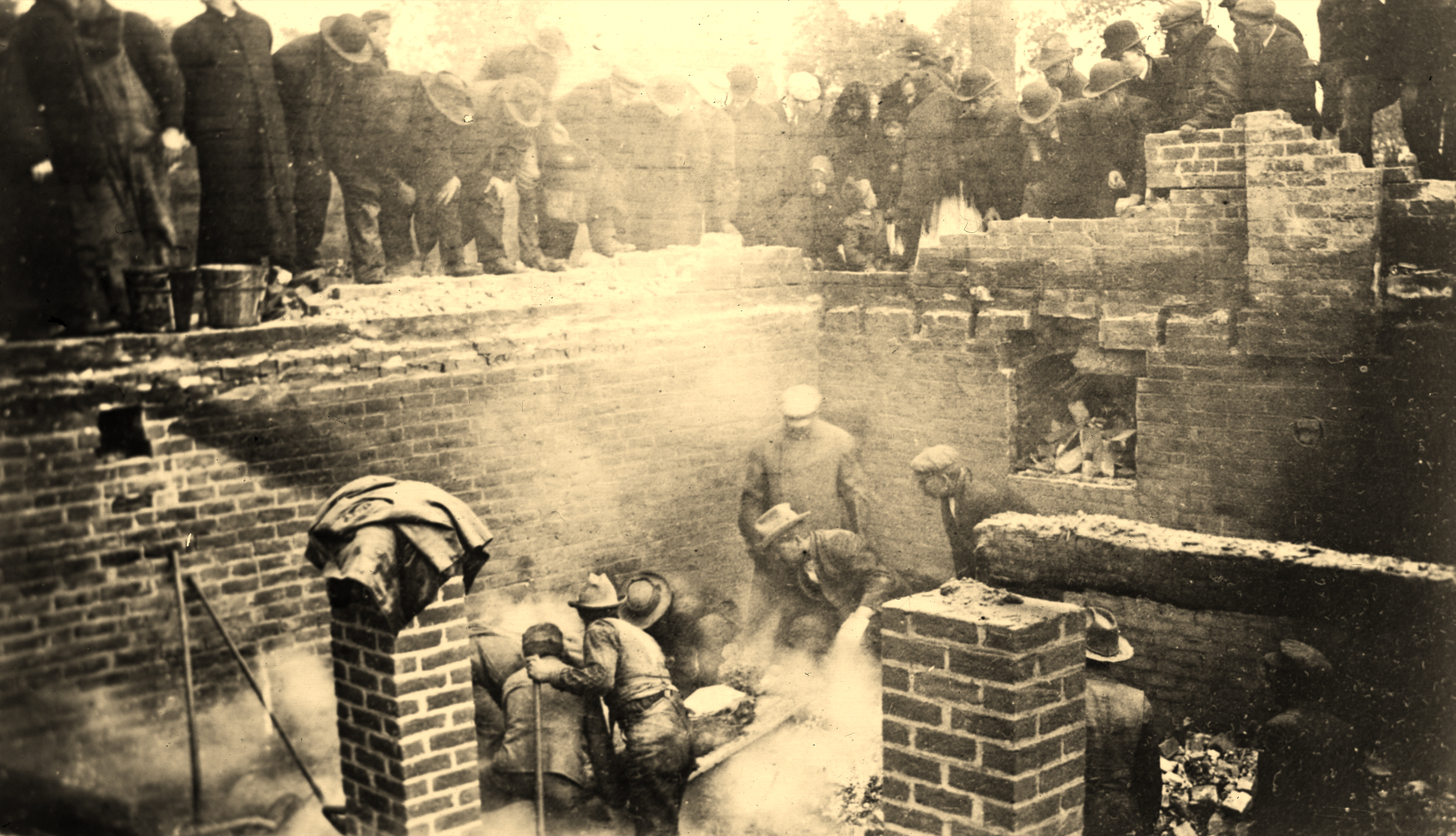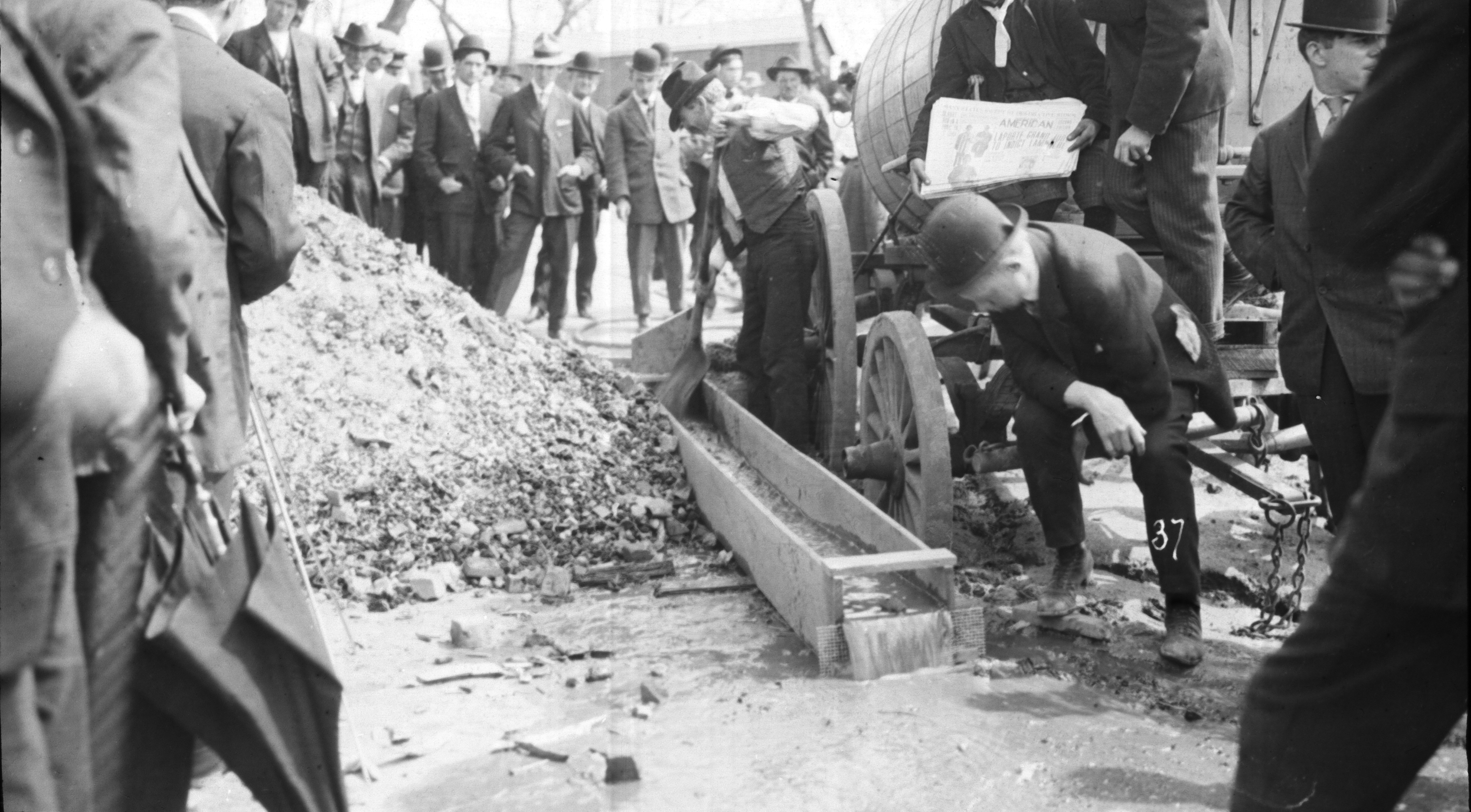The La Porte, Indiana, attorney M.E. Leliter had a strange visit in the spring of 1908. The widow Belle Gunness wanted to make out her last will and testament. She feared that she would be murdered by Ray Lamphere, an ex-hired hand whose advances she had spurned. The night of April 28, the Gunness farmhouse burned to the ground. When the embers had cooled enough for investigators to dig through the rubble, they discovered the headless body of a woman clutching the charred remains of three children. But that wasn’t all they discovered.
In Hell’s Princess: The Mystery of Belle Gunness, Butcher of Men, out today from Amazon’s Little A imprint, true-crime writer Harold Schechter explores the legend of the female serial killer referred to as Lady Bluebeard. The discovery of a number of decomposed, dismembered bodies buried on her property led to a much different portrait of Gunness than that of the heroic mother who died trying to save her kids. More than a dozen men arrived at the farm with the promise of love via newspaper want-ads, only to be murdered, butchered, and robbed of their life savings. Lamphere was tried and found guilty of setting the fire, but the children’s murders were left unresolved. Not only is it unclear if Gunness really died in the inferno, the six-foot-tall Norwegian widow may have staged the whole thing—and gotten away with it.
Videos by VICE
VICE caught up with Schechter by phone to find out more about the story of Belle Gunness.

VICE: How did you learn the story of Belle Gunness?
Harold Schechter: I first came across a reference in a book called Women Who Kill by Ann Jones. There’s also a 1950s book, American Murder Ballads and Their Stories, by Olive Woolley Burt. It’s a collection of murder ballads that were orally transmitted and printed with little descriptions of the crimes that they relate to. There are a couple of Belle Gunness ballads in that book. The title of my book comes from one of the ballads, in which she’s referred to as the Princess of Hell, and there’s another ballad that I quote as the epigraph to the book where she talks about butchering men. I had been interested in the whole phenomenon of female serial murderers for a while.
It all happened so long ago. How did you do your research?
I made a research trip out to La Porte, Indiana, where they have this historical society museum, and I found all kinds of documents relating to Belle Gunness. There’s trial transcripts and the local newspapers covered her case extensively. I came back from that trip with hundreds of pages of primary source material that I had scanned onto my iPad. I hired a genealogical record searcher to assist in digging up information. She was able to go to various Chicago courthouses and dig up some really interesting stuff. By the time I began writing the book, I had plenty of material.

On the spectrum of female serial killers, how does Belle Gunness stack up?
Contrary to popular notions, there have been many female serial murderers. There’s a culture critic, Camille Paglia, who says there are no female “Jack the Rippers,” which is basically true. That kind of sexual-mutilation murder is very specifically the male form of serial killing. Women tend to dispatch their victims with poison, and people tend to think of poisoning somehow as this quaint, Victorian way of killing somebody. But some of these women are worse than Jack the Ripper. All the atrocities he committed were postmortem, where these female serial poisoners take great sadistic pleasure in prolonging the agony of their victims.
What made Belle Gunness different?
The thing that made Belle Gunness unique and fascinating to me, in a morbid kind of way, is the fact that she butchered her victims’ bodies like farm animals. That made her unique in the annals of American serial murder. Belle, again, would not only murder these victims, apparently by administering poison and then delivering a death blow with a hammer, she would drag their bodies down to the cellar of her farmhouse and chop them up like farm animals, then bury them in this backyard graveyard that she had. That added element of violent sadism made her very unique to me.

How did Belle’s physical size relate to her ability to butcher people like livestock?
She had the physical wherewithal to do that. Belle was in the neighborhood of 250 to 300 pounds when she died. She was a big woman. She’d been raised a sharecropper’s daughter in Norway and had always done a lot of physical farm labor. In spite of that, and judging from existing photographs, her evident unattractiveness, she was able to exert some sexual hold on a lot of her victims. Her whole modus operandi, in an age before Craigslist, was luring these lonely bachelors to her farmhouse by putting matrimonial ads in Scandinavian-language newspapers. A string of these hapless guys just showed up, one after another, at her farm, and then disappeared. It’s straight out of a gothic horror novel.
Was there a term back then for her type of murderer? Is it fair to say that Belle Gunness might be the first noted “Craigslist killer”?
I don’t think they did back then. Later on, these people were labeled “want-ad killers.” Back then, there were what they used to call matrimonial agencies, which were kind of like Tinder or Match.com, these fly-by-night organizations where they would try to hook up what they used to call old maids or widows with unmarried guys. There was a huge population of Norwegian immigrants back then, many of whom were farming in the Midwest, and there was one particular paper which was very widely circulated. All the ads were in Scandinavian-language newspapers. After Belle Gunness’s crimes were discovered, there were campaigns against a lot of these matrimonial agencies.
Where did the nickname “Lady Bluebeard” come from?
They compared her to the famous fairy-tale figure who would marry a succession of wives and then murder them and chop them up, leaving their bodies in this forbidden room. The connection to Bluebeard wasn’t only that she was murdering a succession of spouses or potential spouses, but she was also chopping up their bodies and keeping them around her premises, the way Bluebeard did. On the first Sunday after the crimes were discovered, an estimated 20,000 people showed up at Belle’s farm. It was like a carnival. People selling ice cream and popcorn, peddling postcards of the farm, the victims, and the remains that had been dug up. That turned the story into this Edgar Allen Poe-like horror tale.

Who was Ray Lamphere?
Ray was just handyman that Belle hired. As she tended to do with her handymen, she entered into a sexual relationship with him. Ray began to think that they would get married. He would be co-owner of this big farm, but he was supplanted by this other guy, Andrew Helgelien, a Midwestern farmer who was Belle’s final victim. She spent about 18 months luring him to her farm and then murdering him. Exactly what happened between Ray and Belle is a little unclear. She kicked him out of the farmhouse as soon as Andrew arrived and consigned him to the farm. Apparently Lamphere was very resentful about being displaced.
Did he know about the murders?
Evidently, what seems to be the case is that Lamphere knew that Belle had killed, and was possibly blackmailing her. In any case, there was this very dramatic rift between Belle and Lamphere, and she tried to have him arrested. She did have him arrested several times for trespassing, and tried to have him declared insane. Finally, she went to her lawyer and made out her will and told him that she was afraid that she was going to be murdered by Lamphere. That very night, her farmhouse burned down. Ray Lamphere was accused of arson and murder. That was the nature of their relationship.
Tell me about the skull that was eventually discovered. How did it play into the search for Belle Gunness?
Ray Lamphere spent the evening Belle’s house burned down at the home of this local African American woman, Elizabeth Smith. Later on, investigators going through Elizabeth Smith’s house discovered this human skull. (This wasn’t until years later, after Elizabeth Smith died.) When they went through her possessions, they found a human skull. People immediately assumed this was Belle Gunness’s missing head, and that it proved that Ray Lamphere, abetted by Elizabeth Smith, was responsible for murdering Belle Gunness and starting the fire. But Elizabeth Smith dabbled in black magic, and apparently this skull was related to that and had nothing to do with Belle Gunness.

How was Belle Gunness’s story received in the news media of the day?
It was the heyday of what was called “yellow journalism.” Hearst and Pulitzer were competing against each other in terms of attracting the largest number of readers. All the papers owned by Hearst and Pulitzer, but particularly the ones in Chicago and the Midwest, would print the most sensationalistic stories about Belle—this was the beginning of tabloid journalism in our country. You had that going on for weeks and weeks and weeks, these front page stories about Lady Bluebeard, Lamphere, and her murder farm just drumming up all this incredible morbid curiosity.
How was the story sensationalized?
I guess you could say the journalistic standards were very relaxed back then. All kinds of rumors would be published as facts. Naturally, the crimes were described in the most lurid possible way, and the number of victims that she had potentially murdered were exaggerated. Rumors were flying. It might be 50 or 100 people she had killed. They basically stopped digging after they had uncovered about a dozen bodies. We don’t definitively know the number of people she killed. Fueled by all this sensationalistic journalism, these various myths and folktales immediately grew up about Belle, as they tend to do around any sensational serial murderer.

Finally, what do you think happened to Belle Gunness?
It’s still a mystery. We don’t know whether Belle died in that fire or escaped. Was the body of that woman Belle Gunness? There were family members of these bachelors she had killed who were starting to nose around. Things were closing in on her. Some people feel she just committed suicide and set the fire herself. Since there was no head, since they never found the head to this body, there are other people who believed she staged the whole thing, that she lured some woman to her farm, murdered her, chopped off her head, set fire to the house, and escaped. Even now we don’t know if she died in the fire or got away with it. It’s still unresolved to this day.
Sign up for our newsletter to get the best of VICE delivered to your inbox daily.
Follow Seth Ferranti on Twitter.




